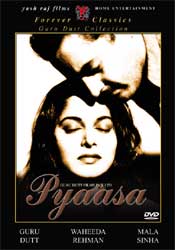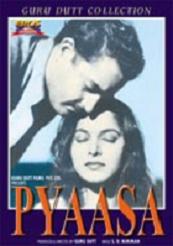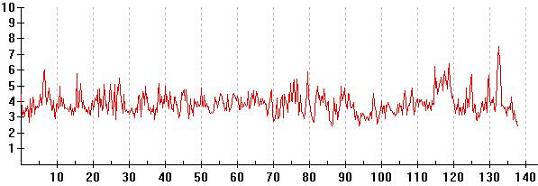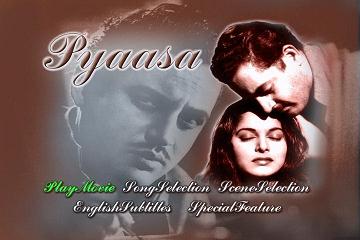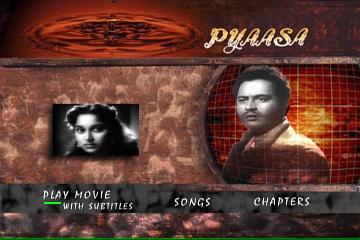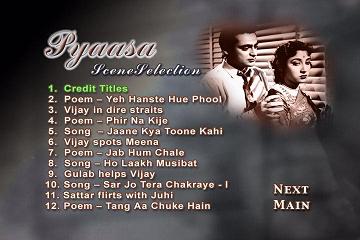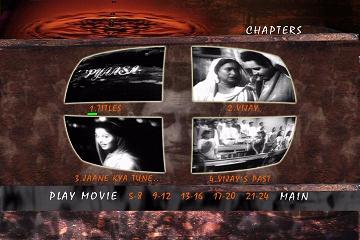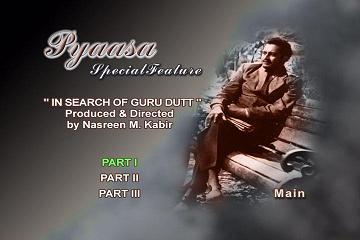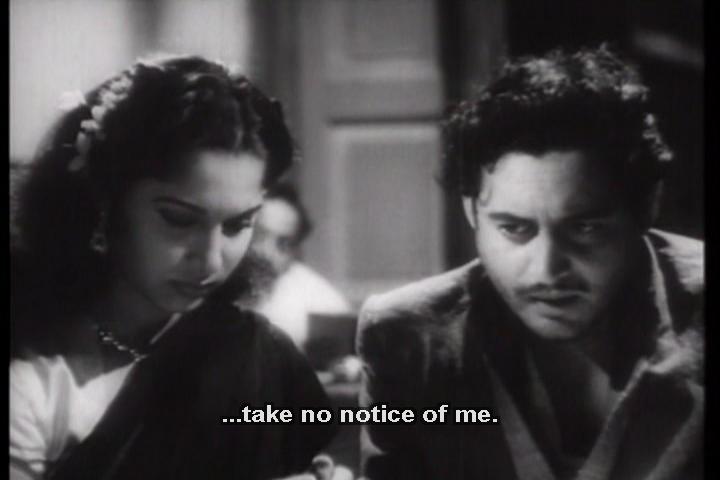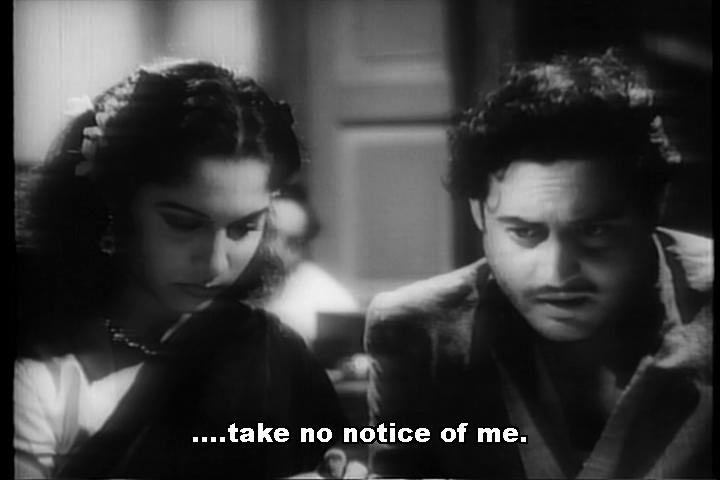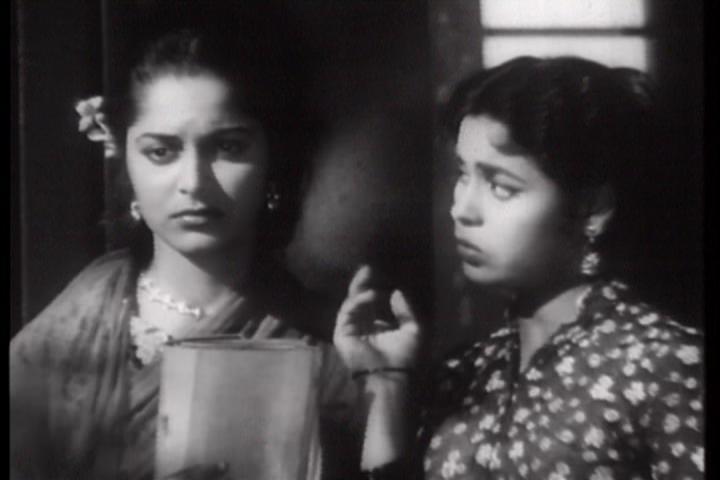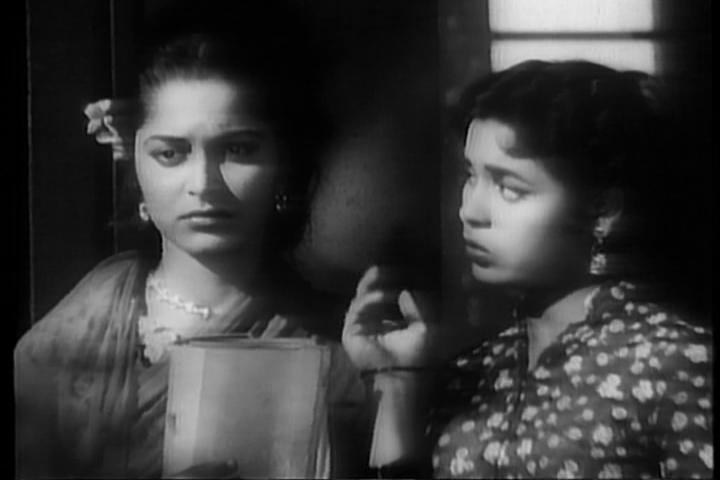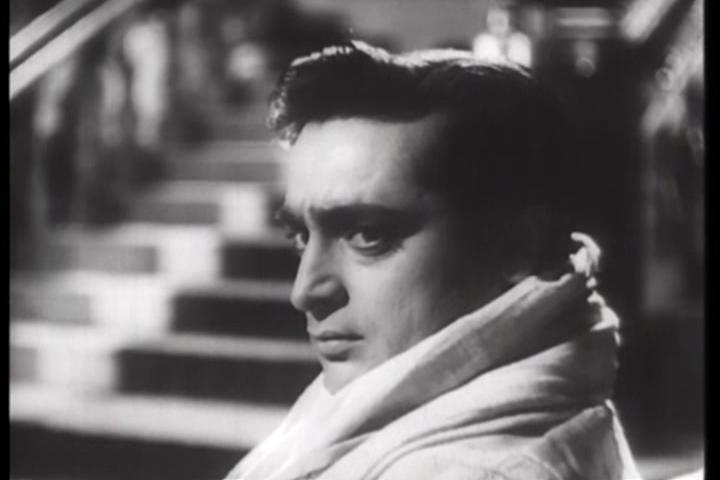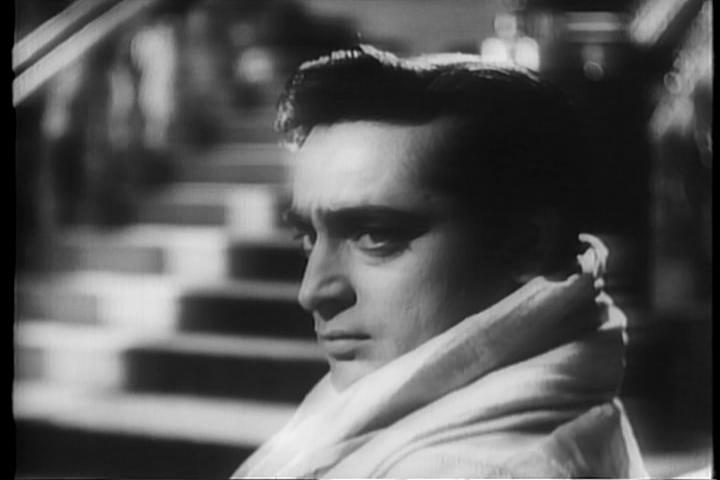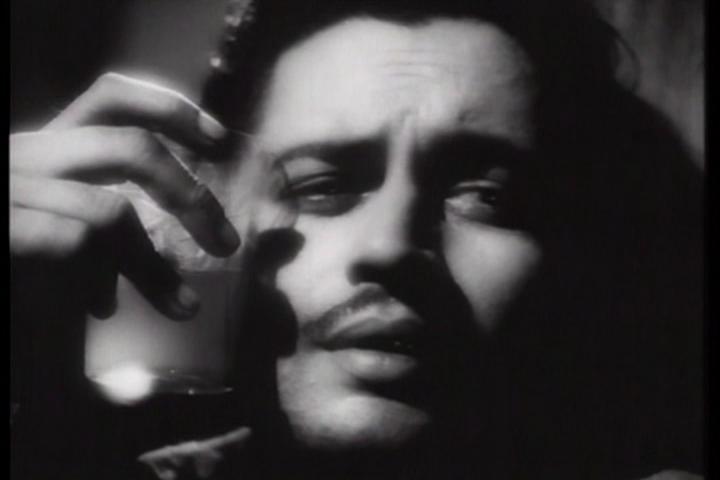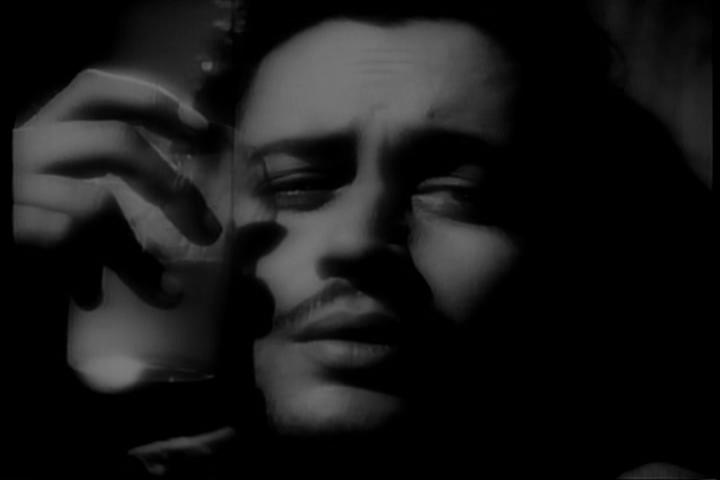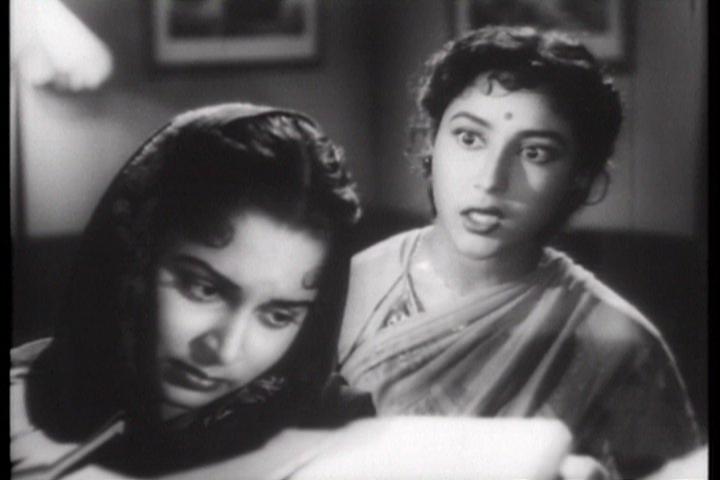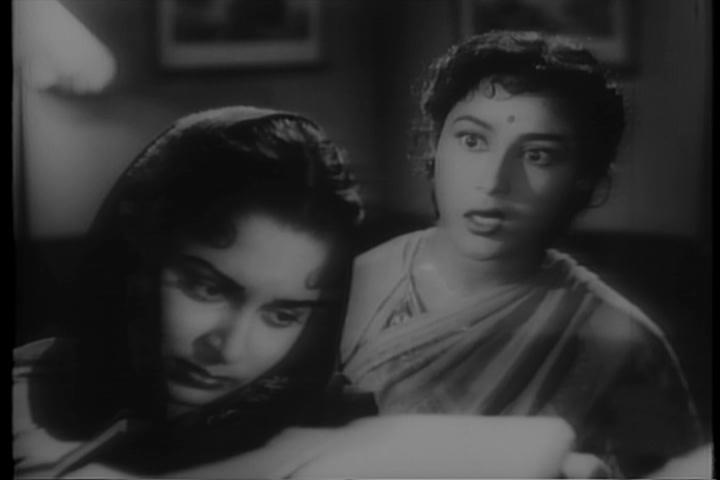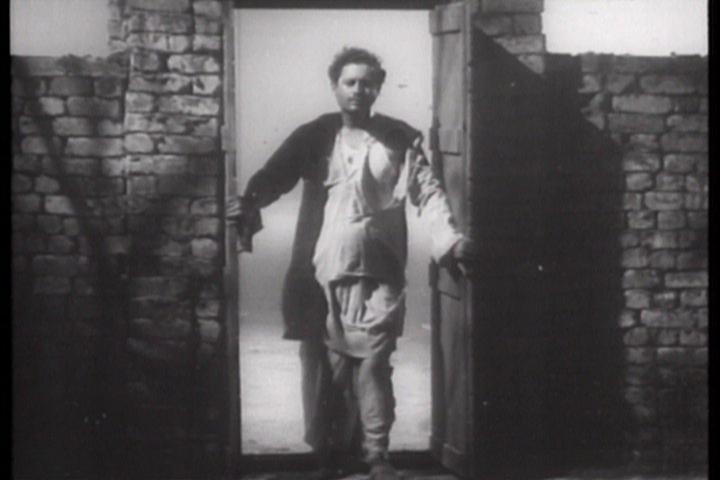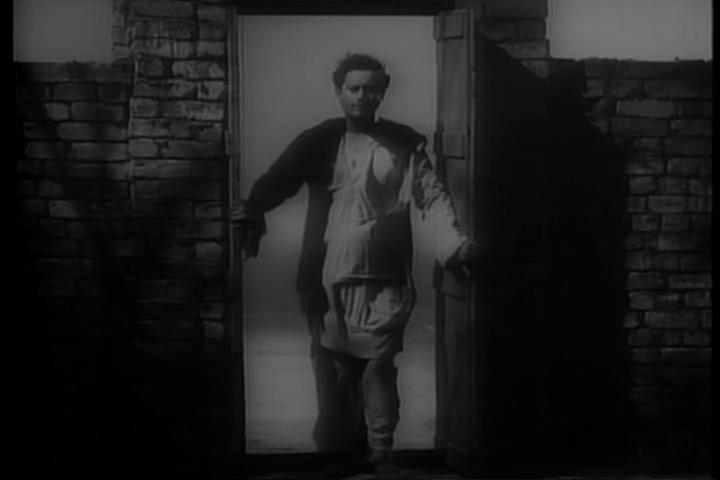![]()
![]()
![]()
![]()
|
Search DVDBeaver |
S E A R C H D V D B e a v e r |
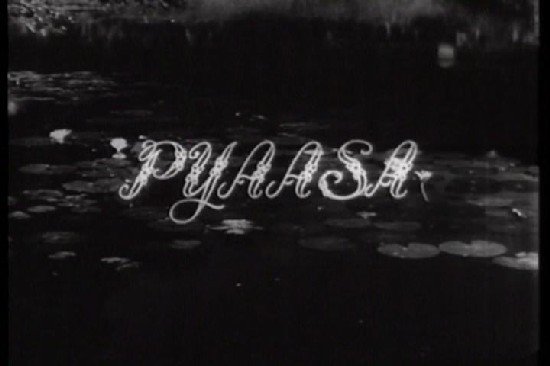
(aka "Eternal Thirst" or "The Thirsty One" or "Thirst")
directed
by Guru Dutt
India 1957
|
Part social commentary, part morality tale, part portrait of
the artist, and part hooker-with-a-heart-of-gold tract, Guru Dutt, with his
1957 feature, Pyaasa (The Thirst), has delivered equal parts style and content
in harmonious application. Undertaking the lead role, the director plays the
part of Vijay, a poet come upon hard times, who while teetering on the brink
of self-destructive despair, flails against a post-Partition India where
society, intoxicated by the allure of materialistic fulfillment, has succumbed
to cynicism. An anonymous street singer (Dutt’s wife, Geeta Dutt) articulates
the work’s unifying theme, “Slake the thirst that lies deep in my soul.” This
ravaged India is revealed in many ways as a Wasteland. The societal
infrastructure has crumbled, and the thirst that pervades cannot be assuaged
with chemical spirit or other material satiation. |
Posters
 |
 |
 |
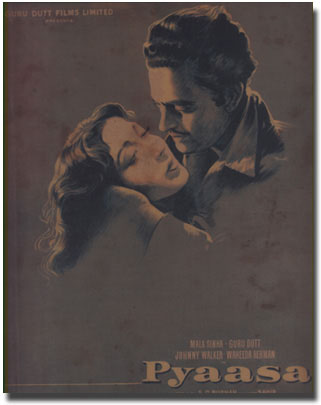 |
Theatrical Release: 1957
Reviews More Reviews DVD Reviews
DVD Comparison:
Yash Raj Films (Forever Classics) - Region 0 - NTSC vs. Eros International (Guru Dutt Collection) - Region 0 - NTSC
Big thanks to Fred Patton for all the Screen Caps!
(Yash Raj Films (Forever Classics) - Region 0 - NTSC - LEFT vs. Eros International (Guru Dutt Collection) - Region 0 - NTSC - RIGHT)
| DVD Box Covers |
|
|
| Distribution |
Yash Raj Films Region 0 - NTSC |
Eros
International Region 0 - NTSC |
| Runtime | 2:18:01 | 2:18:05 |
| Video |
4:3
Original Aspect Ratio |
4:3
Original Aspect Ratio |
|
NOTE: The Vertical axis represents the bits transferred per second. The Horizontal is the time in minutes. |
||
|
Bitrate:
Yash Raj Films (Forever Classics)
|
|
|
|
Bitrate:
Eros International (Guru Dutt Collection)
|
|
|
| Audio | AC-3 6ch Hindi |
AC-3 3ch Hindi |
| Subtitles | English, None | English, None |
| Features |
Release Information: Studio: Yash Raj Films Aspect Ratio: Edition Details:
Documentary : "In Search of Guru Dutt" (84 minutes) Chapters 36 |
Release Information: Studio: Eros International Aspect Ratio:
Edition Details:
DVD
Release Date: 2000 Chapters 24 |
| Comments | The Eros DVD is at times significantly darker to the point of occluding detail. The lack of subtitled songs on the Eros part, especially given their essential role in advancing the narrative, is a grievous omission. Furthermore, the Eros subtitles reveal more grammatical mishaps. To drive the last nail in the coffin in favor of the Yash Raj release, the Eros disc is devoid of extras; meanwhile, the Yash Raj disc provides the very fine documentary, “In Search of Guru Dutt” by Nasreen Munni Kabir, which runs 84 minutes. Yash Raj wins hands down. |
DVD Menus
(Yash Raj Films (Forever Classics) - Region
0 - NTSC - LEFT vs. Eros International (Guru Dutt Collection) - Region
0 - NTSC - RIGHT)
|
|
|
|
|
|
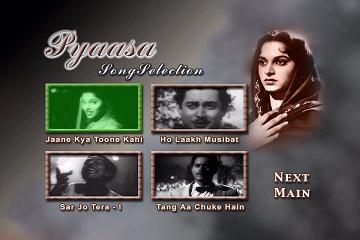 |
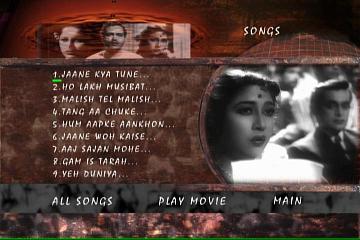 |
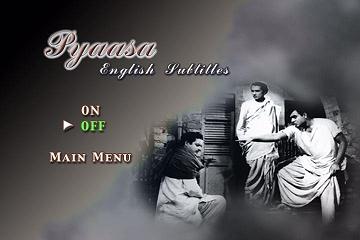 |
|
|
|
Subtitle sample
(Yash
Raj Films (Forever Classics) - Region 0 - NTSC - TOP vs. Eros
International (Guru Dutt Collection) - Region 0 - NTSC - BOTTOM)
|
|
|
|
Screen Captures
(Yash Raj Films (Forever Classics) - Region 0 - NTSC - TOP vs. Eros International (Guru Dutt Collection) - Region 0 - NTSC - BOTTOM)
|
|
|
|
(Yash Raj Films (Forever Classics) - Region 0 - NTSC - TOP vs. Eros International (Guru Dutt Collection) - Region 0 - NTSC - BOTTOM)
|
|
|
|
(Yash Raj Films (Forever Classics) - Region 0 - NTSC - TOP vs. Eros International (Guru Dutt Collection) - Region 0 - NTSC - BOTTOM)
|
|
|
|
(Yash Raj Films (Forever Classics) - Region 0 - NTSC - TOP vs. Eros International (Guru Dutt Collection) - Region 0 - NTSC - BOTTOM)
|
|
|
|
(Yash Raj Films (Forever Classics) - Region 0 - NTSC - TOP vs. Eros International (Guru Dutt Collection) - Region 0 - NTSC - BOTTOM)
|
|
|
|
Report Card:
|
Image: |
Yash Raj Films |
|
Sound: |
- |
| Extras: | Yash Raj Films |
| Menu: | Yash Raj Films |

